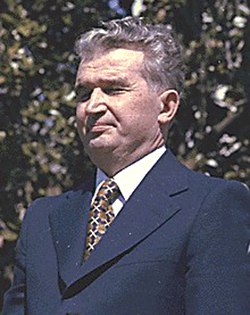
Introduction
Nicolae Ceaușescu, the former General Secretary of the Romanian Communist Party, remains a pivotal figure in the history of Romania and Eastern Europe. His leadership, spanning from 1965 until his overthrow in 1989, was marked by severe political repression, economic mismanagement, and ultimately a brutal end, which has implications that resonate even in today’s geopolitical landscape. Understanding Ceaușescu’s impact is vital for grasping the complexities of post-communist Romania and its transition into a democratic society.
Ceaușescu’s Rise to Power
After joining the Communist Party in the 1930s, Ceaușescu rapidly ascended through the ranks following World War II. In 1965, he succeeded Gheorghe Maurer as the General Secretary and later claimed the presidency in 1974. Ceaușescu’s early years in power were characterized by some level of autonomy from the Soviet Union, which he attempted to portray as a unique Romanian path to socialism. His foreign policy decisions, including cultivating relationships with Western nations, earned him a temporary reputation as a ‘maverick’ leader.
Repression and Economic Challenges
Despite his initial popularity, Ceaușescu’s regime became increasingly oppressive during the years. He instituted a cult of personality, controlling the media and suppressing dissent through the Securitate, the secret police. The economic policies he imposed, including forced industrialization and significant austerity measures, led to widespread poverty and discontent among the population. By the 1980s, Romania faced severe food shortages, and many citizens were forced to live in deplorable conditions.
The 1989 Revolution and Aftermath
The climax of Ceaușescu’s rule came in December 1989 during the Romanian Revolution. Public protests fueled by anger over shortages and repression culminated in a violent uprising. On December 22, 1989, he was captured and subsequently tried by a military tribunal for crimes against the people. His execution on December 25, 1989, marked a significant moment in the fall of communism in Eastern Europe.
Conclusion
Nicolae Ceaușescu’s legacy is a complex tapestry of ideological ambition and human suffering. While he initially sought to assert Romania’s independence within the communist bloc, the autocratic nature of his leadership led to widespread hardship and ultimately his downfall. For modern-day Romania, Ceaușescu’s rule serves as a historical lesson on the dangers of totalitarian regimes and the importance of democratic governance. As Romania continues to evolve as a member of the European Union, understanding this dark chapter in its history is essential in forging a better future.



